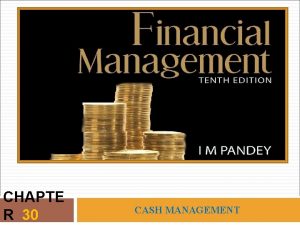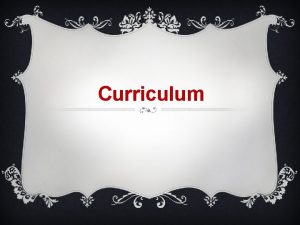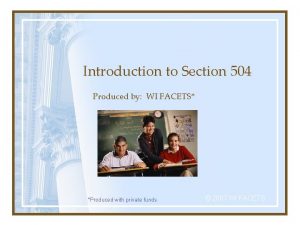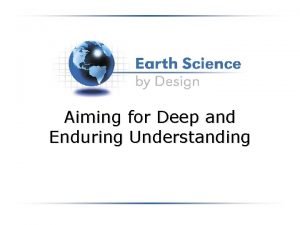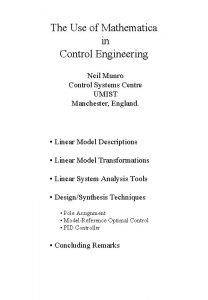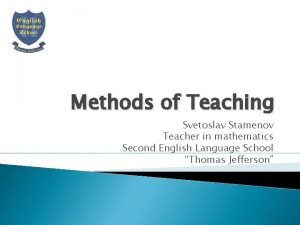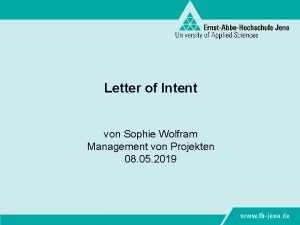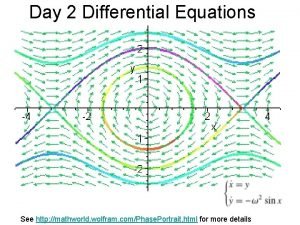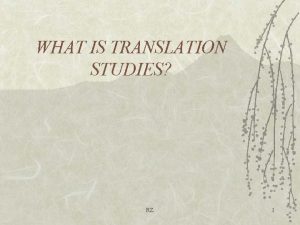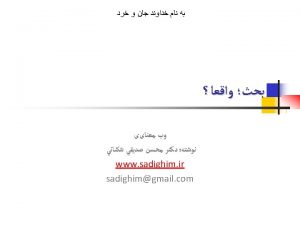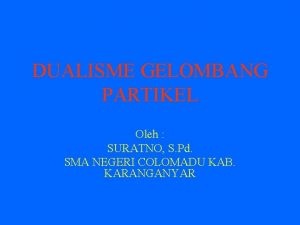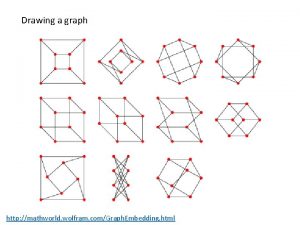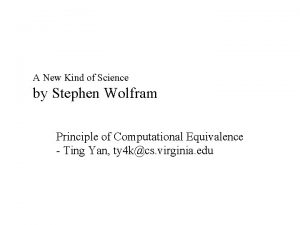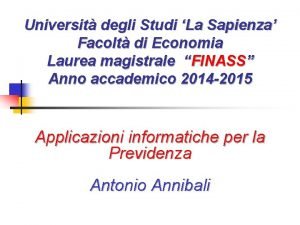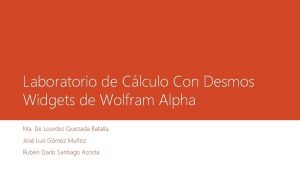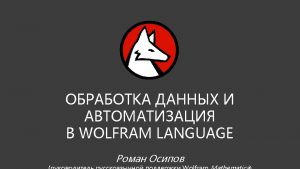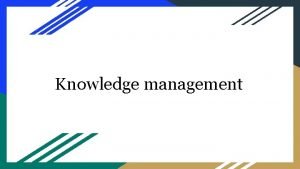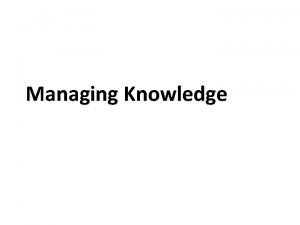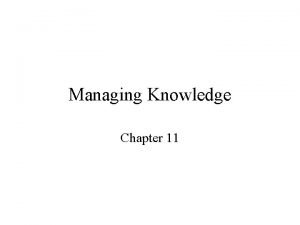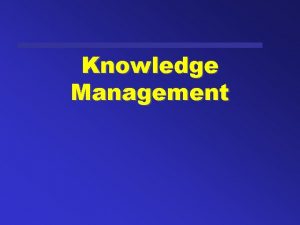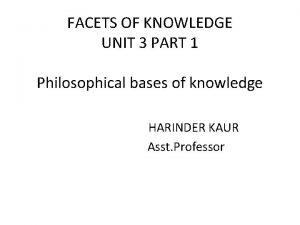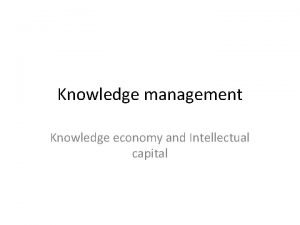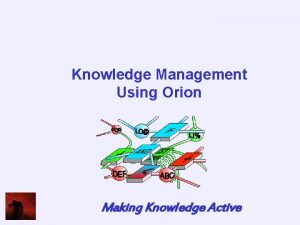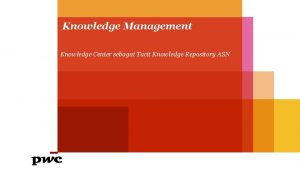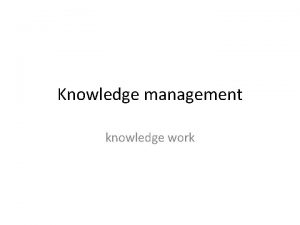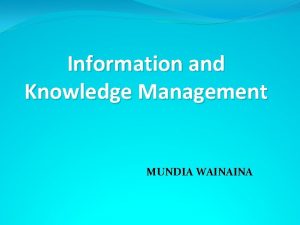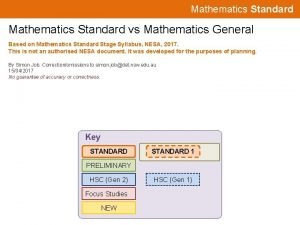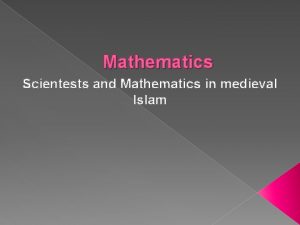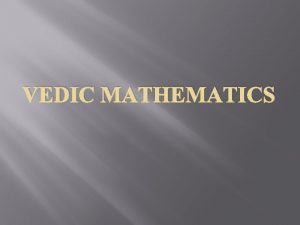Some facets of knowledge management in mathematics Wolfram





















- Slides: 21

Some facets of knowledge management in mathematics Wolfram Sperber (Zentralblatt Math) Patrick Ion (Math Reviews) Facets of Knowledge Organization A tribute to Professor Brian Vickery ISKO UK biennal conference 4 th-5 th July 2011 London

Agenda A state-of-the-art analysis Enrichment of the MSC - new approaches: SKOS and a controlled vocabulary for mathematics Conclusions and Outlook

State of the art Zentralblatt Math and Math Reviews: the leading reviewing journals in mathematics and its applications coverage: more than 3, 000 bibliographic entries of mathematical publications (journal articles, monographs, textbooks from 1820 up to now systematic analysis of the whole literature of mathematics

Facets of content analysis Bibliographic metadata Authors, title, source, . . . Semantic metadata Reviews/ abstract, keywords, classification Linked meta. Data References, networks of authors, coauthors … Social metadata Comments , questions. . . (in Zentralblatt Math and Math Reviews)

Different levels of semantic metadata Reviews (individual) Keywords (semi-formal, but no controlled vocabulary exists for mathematics up to now) Classification (formal, no degrees of freedom)

Classification in mathematics: Mathematics Subject Scheme (MSC) Features of the MSC: a topic-specific classification scheme nodes: more than 6, 000 nodes (63 on the top level, more than 500 on the second level, more than 5, 000 on the third level) relations: hierarchical relations are the most important relations within the MSC, but there are further two types of similarity relations: See also and For … see …

Printed and electronic versions of the MSC up to 2010 the master of the MSC was the printed version (advantages: nearly linear reading), but is only of limited use for the retrieval in the database reasons: too many groups, too complex, not intuitive for the most users, it is much simpler to search for keywords and names there is an electronic master of MSC 2010 (Te. Xencoded), the Te. X-encoded MSC is not machine -understandable

Restrictions and deficits of the MSC (I) the Te. X-encoded version doesn't use standards for a semantic analysis of the structure of the MSC, so it is not interoperable with other classification schemes; the classes are defined only by their labels and their location within the MSC the labels of the classes are not unique the MSC is heterogeneous: the classes have different types, especially: modeling, mathematical objects, theories and methods, etc.

Agenda A state-of-the-art analysis Enrichment of the MSC - new approaches: SKOS and a controlled vocabulary for mathematics Conclusions and Outlook

Enrichment of the MSC: Transformation to SKOS Create a SKOS-encoded form of the MSC (SKOS – Simple Knowledge Organization Scheme) Why SKOS? SKOS provides a standardized vocabulary for classification schemes, thesauri, etc. SKOS is based on XML and RDF, this means SKOS can be extended to individual requirements, e. g. , formula analysis in mathematics

The first step: Encoding of the MSC in SKOS: a 1: 1 translation form the Te. X-master to a SKOS master (so we can model the MSC given by its classes and hierarchical relations) the result: we have the same content as in the current version, but the content is encoded in a machine-understandable way (so it can be used by other schemes and applications) the scheme is extensible: we can add further information

SKOS snapshot

Enhancement of the MSC model up to now: the MSC model is just a classical graph model overlapping of classes couldn't be modeled in the printed form, but now we can do it! the idea is very simple: we use the terminology used in mathematical publications and add this information to the scheme

Description of MSC classes by terms The idea: each class will be characterized by a (weighted) vector of terms In more detail: Using machine-learning tools Step 1: Vocabulary in MSC and other sources provide a start vocabulary Step 2: Analysis of existing keywords in the databases Step 3: Keyword extraction of the (classified) information of the databases ZBMATH and Math. Sci. Net

The usual problems relevant terms are typically phrases, not single words synonyms and homonyms different grammatical forms of phrases abbreviations which are often used Controlled (semi-automatic) processing

The (fictional) result for MSC class Ordinary Differential Equations (MSC 34 -XX) Terms Linear ODE Occurences 371 Nonlinear ODE 1072 Fractional ODE 96 Stability 781 Periodic Solutions 37 . . .

Benefits a precise and dynamic characterization of the MSC classes a controlled vocabulary for mathematics a tool which can be used for clustering of documents (similarity analysis of documents, (semi-)automatic keyword extraction and classification, keyword generation by authors, sophisticated retrieval features (MSC as a hidden method for retrieval)

Further steps a rigid facet structure for the MSC (reducing the size of the MSC) a typing of the MSC classes mathematical modeling, mathematical objects (e. g. , ordinary differential equations), theories and methods (e. g. , K-theory), qualitative aspects (e. g. , stability) applications (within mathematics and in other fields) formula analysis and formula search (Math. ML)

Agenda A state-of-the-art analysis Enrichment of the MSC - new approaches: SKOS and a controlled vocabulary for mathematics Conclusions and Outlook

Conclusions and Outlook knowledge management in mathematics is at a turning point, we need new machine-based methods for content analysis and a new quality of service using standards formats for the MSC (e. g. , methods of Semantic Web allowing a machine-processing of semantic information) enhancement of the MSC by combining different (classical) methods of semantic analysis (e. g. , classification, controlled vocabularies, etc. ) We are on the way!

Thanks!
 Miller orr cash management model
Miller orr cash management model 6 facets of learning
6 facets of learning Facets of curriculum
Facets of curriculum Facets of formative assessment
Facets of formative assessment Facet model of advertising
Facet model of advertising Five factor model facets
Five factor model facets Wi facets
Wi facets Facets of culture
Facets of culture Six facets of light
Six facets of light Pierwiastek wolfram
Pierwiastek wolfram Wolfram nyquist
Wolfram nyquist Wolfram alpha4
Wolfram alpha4 Sophie wolfram
Sophie wolfram Wolfram syndrome
Wolfram syndrome Phase portrait plotter wolfram
Phase portrait plotter wolfram Holmes translation studies
Holmes translation studies Wolframalpha owner
Wolframalpha owner Sebuah filamen wolfram memiliki panjang 20 cm
Sebuah filamen wolfram memiliki panjang 20 cm Mathworld wolfram
Mathworld wolfram A new kind of science
A new kind of science Wolfram alpha sapienza
Wolfram alpha sapienza Desmos coordenadas polares
Desmos coordenadas polares
